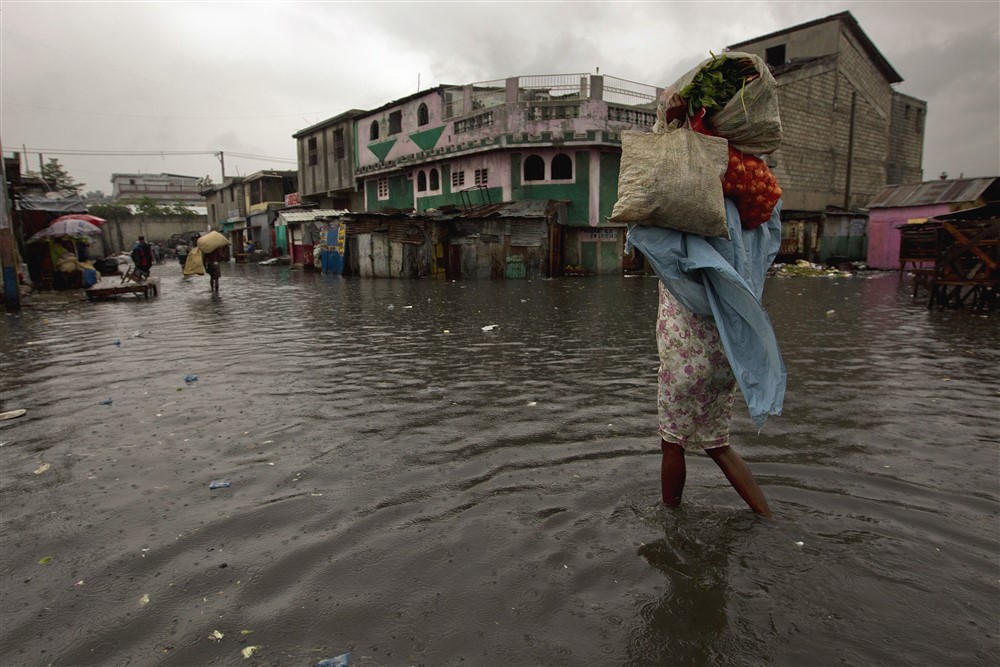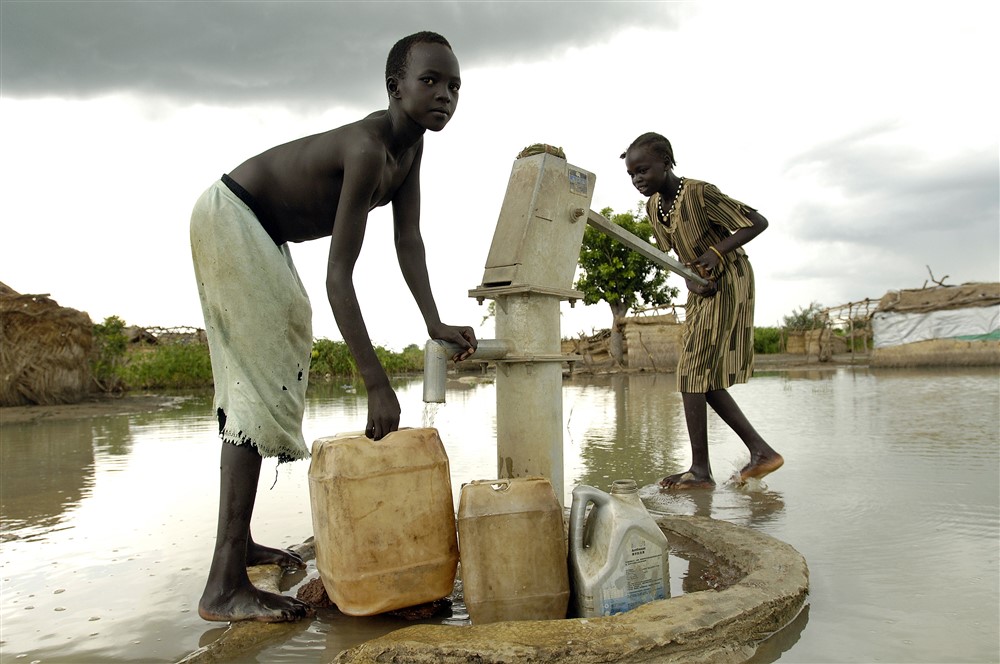Water and Disasters
The impacts and costs of these events are exacerbated by such factors as unplanned urbanization and degradation of ecosystem services. Reducing risk to, and improving the resilience of, water and sanitation services will be key to maintaining access during a climatically uncertain future.

A woman walks through a flooded market in Port au Prince. Hurricane Sandy passed to the west of Haiti October 25, 2012 causing heavy rains and winds, flooding homes and overflowing rivers. Photo Logan Abassi UN/MINUSTAH
Challenges
Water-related disasters pose both direct impacts (e.g. damage to buildings, crops and infrastructure, and loss of life and property) and indirect impacts (e.g. losses in productivity and livelihoods, increased investment risk, indebtedness and human health impacts).The increasing economic cost and toll of disasters should be a significant incentive for governments and humanitarian organizations to focus more attention on preparedness, prevention and addressing the root causes of vulnerability.

Children displaced by flooding in South Sudan collect water from a submerged hand pump. Photo UNMIS
Opportunities
Meeting the challenges associated with water-related disasters requires investment in and implementation of good disaster risk-reduction. Despite improvements in preventive efforts, scaling these up to meet current and future needs remains a central challenge.Links
- Global Framework for Climate Services Office: Associated Programme on Flood Management
- Global Framework for Climate Services Office: International Drought Management Programme
- Global Water Institute (2013): Future water (in)security: facts, figures and predictions
- UN Environment: Water-related disasters
- UNESCO: Water-related disasters
- UNHCR (2017): Global Trends: Forced Displacement in 2017
- WMO: Disaster Risk Reduction Programme

